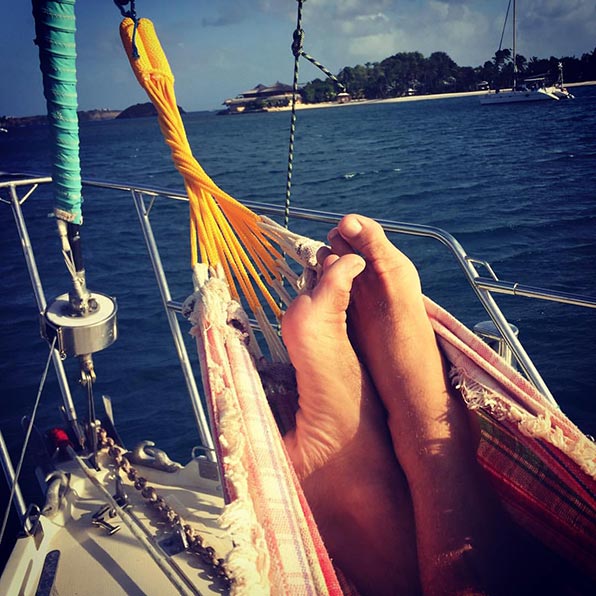When bare feet no longer cut it
My estimate is that we have spent 90% of the past 5 years barefoot. In fact, we’ve even been doing a bit of hiking sans shoes lately. Because of this, the idea of shopping for any type of footwear other than running shoes or flip flops seems extremely foreign to me.

As we make our way to colder climates though, we know that we’re going to need some additional footwear. A little search online shows that there’s a huge range of what is available. The image below shows just a sampling of what West Marine offers as “sailing boots.” And some of them are big bucks too!

I don’t even want to think about this stuff yet…

Photo source: Yacht Mollymawk


I am not so sympathetic as 90% barefoot is good going. If any help in moderates latitudes a decent pair of sailing boots is more than adequate so long as you have some socks (very yucky without tbh). You must have great arches and not need insoles but I find that I do need them, especially if standing for long periods so need a size big enough for that. I’ve just bought (for Antarctica) some highly recommended Bogs Classic boots which I don’t think are anywhere on your list but seem much warmer than ordinary boots, are waterproof to mid calf and have these great handles for pulling on.. I made sure I got the kind with really good slip soles and brake-heel. I have yet to give them any kind of serious test but I’m looking forward to it. Definitely much tougher than any sabots I’ve ever had, though I’ve friends who sear by Dubarrys (expensive). HTH.
They look good!
http://www.bogsfootwear.com/shop/style/60142.html
Slightly off-topic, as it does not related directly to boots: even sailing the Chesapeake in mid-winter, I always feel safer in deck shoes with fleece socks. As you know, the PDQ is a pretty dry ride. On those few completely horrible wet cold days, I’ve taken to wearing a dry suit, in which case my dive boots work as well as anything.
But the most important thing to me, more than dry feet, is to be able to get them dry before I wear them again. I’ve got to believe any boot will get ungodly nasty on a boat in damp, cold places. At home the answer is a home-made boot drier. No matter how sodden, in 2 hours they are warm and dry. Gloves too.
http://sail-delmarva.blogspot.com/2014/09/boot-drier.html
I’ve been toying with developing a compact boat-specific model:
* compact
* low power draw
* draw air from inside the cabin
Perhaps the solution is to suck instead of blow, exhausting the damp air outside. A few hoses which collect to fan and are pulled out a ventilator. Perhaps no additional power is required, if the ventilator has a fan. Invent something brilliant!
Coincidentally this just showed up in my Facebook news feed. 🙂
http://www.goodshomedesign.com/diy-boot-dryer/
Yeah, there are tons on-line. However, leaving a hair drier running seems a bit noisy and crazy. It really doesn’t take that much, just steady movement that is dry and reaches the toes. Same with gloves; ski gloves can be a bugger to dry, the main reason climbers always use shell + over glove for multi-day tent in the snow stuff.
I agree, the hair dryer thing is silly.
I have owned my Dubarry seaboots for 5 years since our cold excursions to Scotland, Sweden and Norway… they’re great!
Another friend just messaged me and said that he loves his Dubarrys too.
Why risk frostbitten toes,stay barefooted,my friends!
By that,stay in tropical latitudes!
🙂
As long as you aren’t in the water, go for warm and dry. BUT, if you do end up in the water (accidently of course) I’d recommend being able to get them off quick. Past experience as a commercial diver. My most difficult times getting back on deck was with boots full of water or sand, mud, whatever I was in. Dry suits look really interesting. They were just coming in when I was diving. We used the Mark V hard hat in canals. The suit part was dry, until you blew a seam or poked a hole. They filled up real quick. I’d suggest two pair of boots. The pics you show seem to have one that might be zippered. Just a thought.
Thanks for the input, Dale.
I have a pair of the West Marine boots. Would not recommend them. I sailed in 2 degree C weather in Canada yesterday and the only cold part of me was my feet. My Gill Offshore gear and 4-5 layers beneath kept me toasty!
Thanks Shelley. Bad reviews are as important to consumers as good ones.